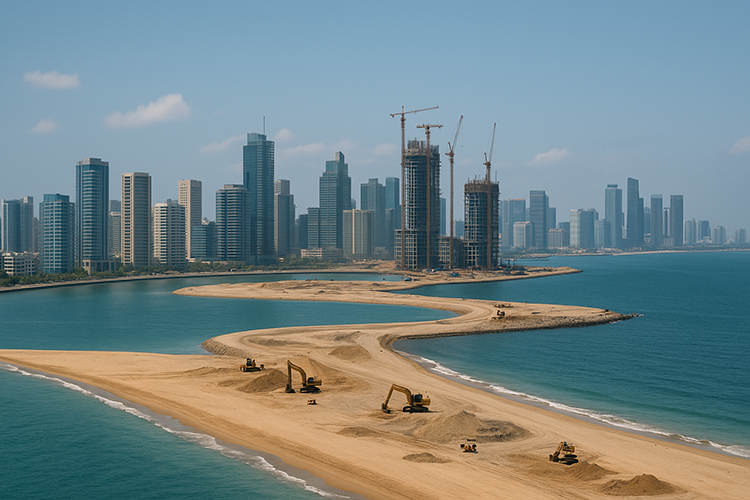Southeast Asia’s Coastal Cities Turn to Reclamation to Secure Space and Shorelines
Coastal reclamation is moving to the centre of urban strategy across Southeast Asia and the wider Asia-Pacific, as governments try to balance land scarcity with the growing risks of climate change. From Singapore to Manila and Ho Chi Minh City, a new generation of large-scale projects is reshaping coastlines while raising questions about financing, ecology, and long-term resilience.
In Singapore, planners are studying an ambitious “Long Island” scheme off the East Coast that would combine flood barriers with new land for housing and a freshwater reservoir. Officials have signalled that defending the city against rising seas could cost tens of billions of dollars, with a dedicated state fund receiving fresh injections this year. Work is also continuing at Pulau Tekong, where engineers are experimenting with “polder” methods to reduce reliance on imported sand.
Manila Bay is undergoing its own transformation. The Pasay Harbor City project, spread across more than 250 hectares of new land, aims to create space for businesses, leisure, and convention facilities. Local authorities see it as part of a broader effort to revitalise the bayfront, but it has also sparked controversy. Environmental agencies placed multiple reclamation plans on hold last year, citing concerns about fisheries and coastal ecosystems.
Further south, Ho Chi Minh City is advancing the Cần Giờ coastal development, a project backed by billions of dollars in private investment. The plan calls for a vast new urban district with housing for hundreds of thousands of people and space for millions of tourists. Supporters argue it will anchor the city’s expansion, while critics warn it could put pressure on the surrounding mangrove forest, a UNESCO-listed reserve that acts as a natural flood defence.
Elsewhere, international precedents are influencing the debate. Lagos has pushed ahead with Eko Atlantic City, a new commercial hub built on reclaimed land and protected by a massive sea wall. The project is often cited as proof that coastal defence and real estate development can be combined, though some analysts say nearby communities have experienced unintended shoreline changes.
Timetables for these schemes vary widely. In Singapore, work on the Tekong polder is nearing completion, with handover expected soon. In Indonesia, a vast sea wall designed to protect Jakarta is still considered a decades-long undertaking. And in Hong Kong, plans for a large artificial island in the Lantau area have been scaled back, reflecting cost pressures and environmental pushback.
Financing approaches also differ. Singapore is paying directly through its national budget, while projects in the Philippines and Vietnam rely on joint ventures with local governments and private investors. In Sri Lanka, Colombo Port City has been promoted with tax incentives to attract foreign firms, offering another model for funding.
For real estate markets, the projects are pitched as both a safety measure and a growth engine. Singapore’s Long Island is expected to create new housing land in parallel with coastal protection. Manila’s new districts are tied to tourism and events. Cần Giờ is marketed as a “green city,” designed to draw residents and visitors alike.
Underlying all of this is the climate challenge. Scientific projections show sea levels continuing to rise through the century, prompting governments to raise minimum land heights and design features with long horizons in mind. In Singapore, new reclaimed plots must now sit at elevations well above earlier standards.
Industry specialists, academics, and officials are meeting throughout the year at forums in Singapore to review case studies and technical advances, from dredging practices to soil stabilisation. The gatherings reflect a common goal: making reclamation both more efficient and more sustainable, while ensuring new districts can withstand the pressures of climate change.
The pace of reclamation underscores how coastal cities are confronting two urgent realities at once. They must create space for growing populations and economies, but they must also defend themselves against seas that are steadily rising. The outcome of these efforts will determine not only the shape of new districts, but the long-term safety and livability of the region’s urban coastlines.









